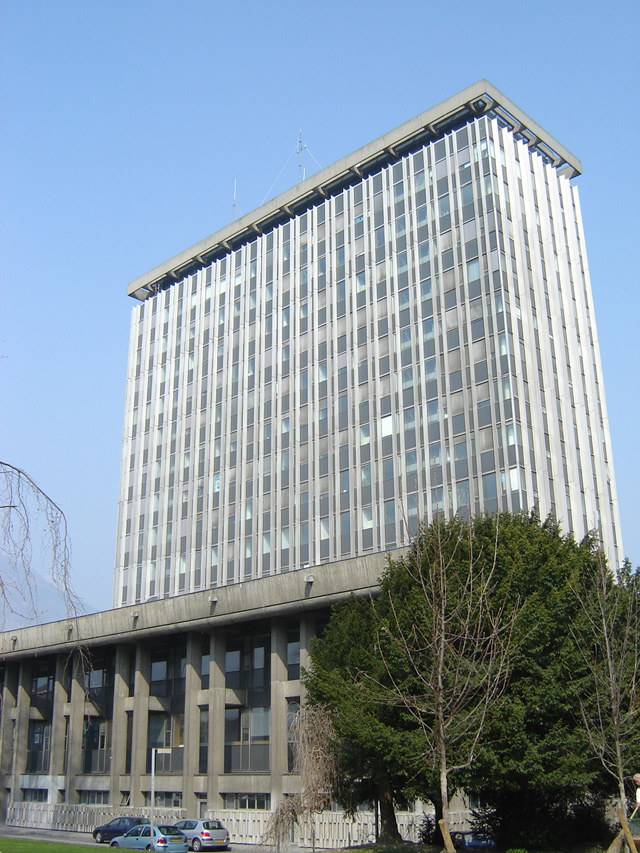15 August 2024–Data recorded by seismic instrumentation in buildings where ground motion is weak to moderate can help engineers better understand structural responses to earthquakes, according to a new paper published in the Bulletin of the Seismological Society of America.
Philippe Guéguen and Ariana Astorga at Université Grenoble Alpes – ISTerre analyzed data recorded over 18 years from a seismic network installed in the 13-story reinforced concrete Grenoble City Hall Building in France, along with data recorded from 28 low-and high-rise reinforced concrete and steel buildings in Japan.
Their study concluded that there was complementarity in the structural response model between data collected on the French building subject to small to moderate earthquakes ranging from magnitude <2 to magnitude 4 or 5, and data from the Japanese buildings subject to moderate to large earthquakes ranging from magnitude 4 to magnitude >7.

Guéguen and Astorga analyzed accelerometer data collected in the buildings, to calculate ground velocity and displacement, and its relationship to total structural drift ratio, or the maximum relative displacement between the top and bottom of the building divided by the distance between the top and bottom accelerometers in a building.
They estimated and defined uncertainties of structural response prediction in terms of “within-building” and “between-building” components.
“In classical models, arbitrary uncertainty is generally considered, defined by the model itself,” Guéguen explained. “Exploring uncertainties between buildings of the same type or within the same building but for equivalent ground motions allows us to explore and quantify these uncertainties to better assess the risk.”
Comparing data between the French and Japanese cases shed light on nonlinear processes that are activated in buildings during a continuum of low to strong motion, the researchers noted.
“Using a large number of weak, moderate, and strong earthquake data in buildings allows us to explore linear behaviors, which reveal processes that are not well-studied but essential for characterizing the seismic response of buildings, as well as nonlinear behaviors, which particularly account for structural damage and safety,” said Guéguen.
“Using a range of weak to strong motions provides continuity of information to accurately depict structural behaviors and damage processes,” he added.
Shifts in fundamental frequency—the natural sway of a building—can be triggered at low values of total structural drift and equivalent strain rate, Guéguen and Astorga found.
A range of strain rate thresholds, representing building conditions from undamaged to severely damaged, could activate nonlinear responses, they also concluded.
The researchers were surprised to find that even weak or moderate ground motion triggered nonlinear building response in the study, “even if nonlinear elasticity was already reported in previous studies. With weak motions, we observe nonlinear behaviors triggered by low strain values. This elastic nonlinearity is a process highly dependent on the structural condition,” said Guéguen.
He noted that more buildings located in regions with low to moderate seismicity should be outfitted with instrumentation to help develop more realistic models for predicting the seismic response of structures.
“Earthquake engineers should integrate more results from data and observations into their models,” Guéguen said. “If we compare the advances made through observational data in ground motion prediction, we can imagine that the only way for earthquake engineering to progress is by using data.”
